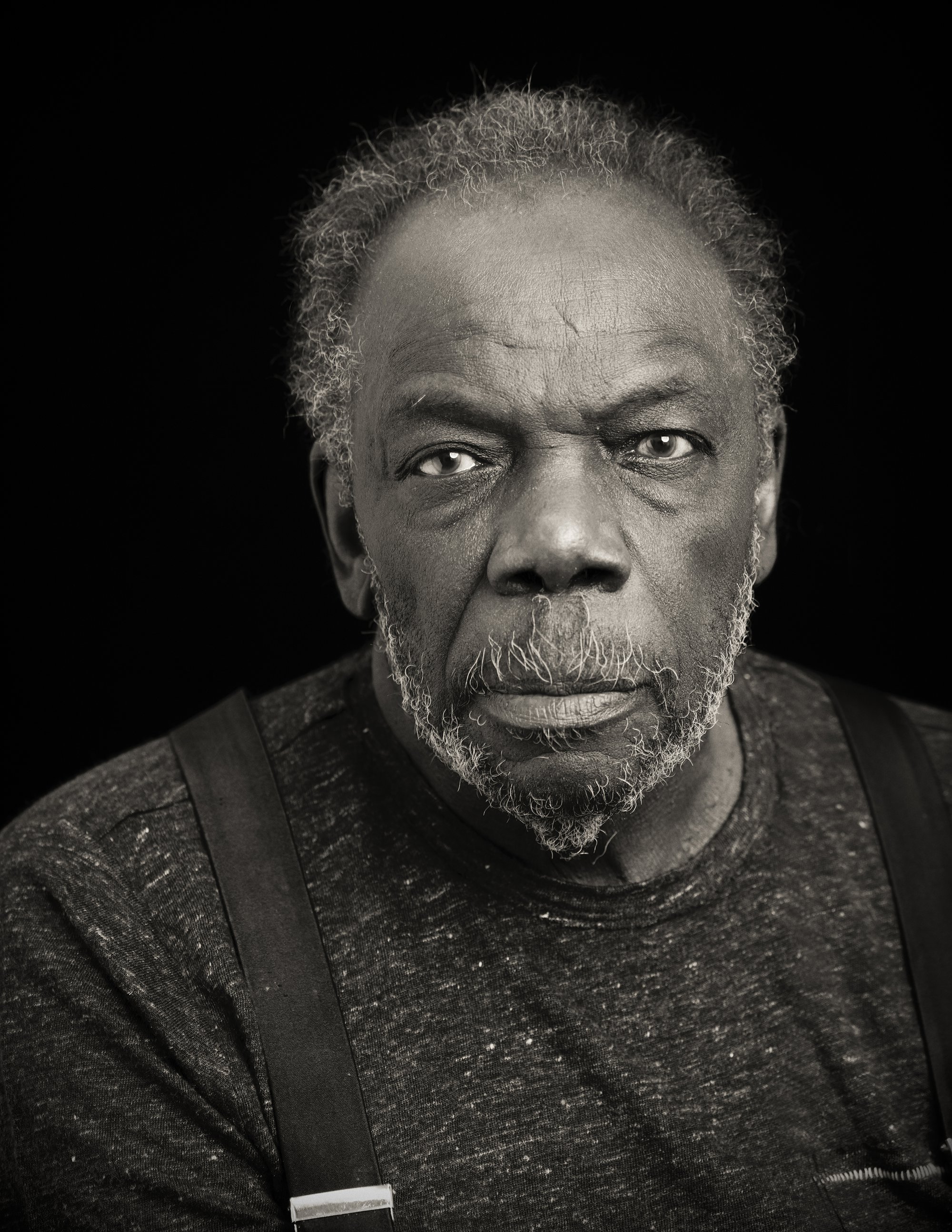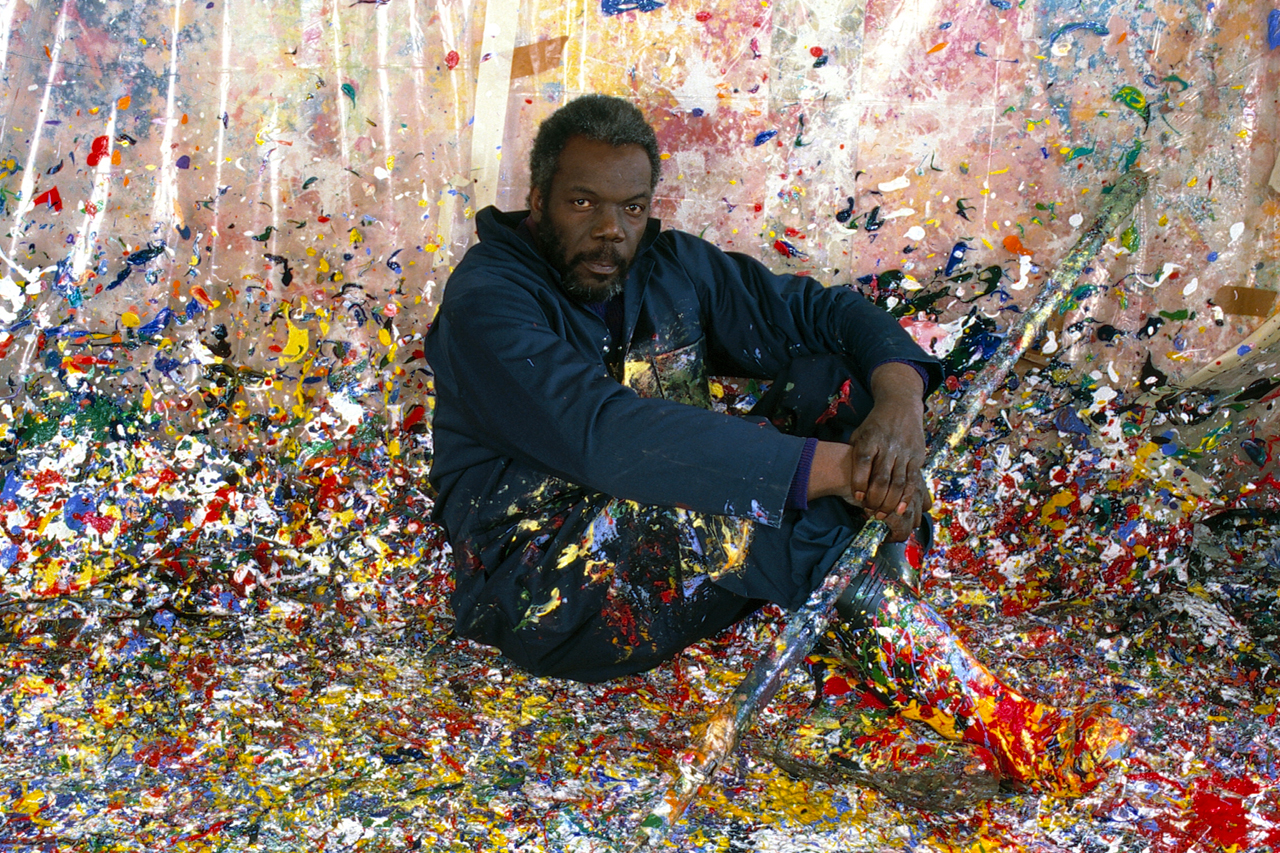
David Kordansky Gallery and Pace are saddened to announce that artist Sam Gilliam passed away on Saturday, June 25 at age 88.
Throughout his seven-decade career, Gilliam reinvented and continuously reshaped abstract painting and sculpture. Using rich constellations of forms, textures, and materials to forge his inventive compositions, his work has exerted a profound influence on generations of subsequent artists.
“Sam Gilliam was one of the giants of Modernism. He was a great friend and great artist who was able to convey the shared torments and triumphs of life through the universal language of abstraction. Sam was very much acclaimed in the 60s and 70s for his revolutionary work that freed the canvas from its support.
The production of Sam’s work never wavered. He painted right up until the end of his life and his most recent works are among his best. I’m proud that his late paintings have received great recognition and I take pleasure knowing that Pace, along with David Kordansky Gallery, brought his radiant work to a greater audience than it had ever known.”
—Arne Glimcher
"I am deeply honored and blessed to have known Sam Gilliam through the last decade of his journey. To serve his vision has been a life-defining privilege. It has been about more than work or even passion—it is a form of devotion to principles that represent what is good, abiding, and true. Sam changed the course of my life, like he inspired the lives of many others, as a generous teacher, mischievous friend, and sage mentor. Above all, Sam embodied a vital spirit of freedom achieved with fearlessness, ferocity, sensitivity, and poetry.
My heart goes out to his wife and partner, Annie; his children, Stephanie, Melissa, and Leah Franklin; Sam’s family; Jenn, Joseph, and the greater Gilliam studio; and all those touched by Sam’s boundless soul."—David Kordansky
Born in Tupelo, Mississippi in 1933, Gilliam was one of the leading figures associated with the Washington Color School—a movement initiated in Washington, D.C. in the 1950s that emphasized large fields of color as a response to the Abstract Expressionist works that emerged from the New York School. He quickly distinguished himself from his peers with the creation of his signature Beveled-edge and Drape paintings in the mid- to late 1960s. During these formative years, Gilliam produced the Beveled-edge paintings by folding unstretched canvas before staining it with acrylic paint to create dimensional, lyrical abstractions, which were then stretched across beveled frames.
His most radical move came next: he freed the canvas from the stretcher and brought his painterly compositions out into space, using unstretched canvas to create his celebrated Drapes. These groundbreaking works, which the artist began producing in the late 1960s, changed the history of art. By suspending his stained canvases from ceilings and walls, Gilliam transformed the medium of painting and its relationship to the spatial and architectural context in which it is viewed. Moving beyond an aesthetic proposition, Gilliam’s work also forged new possibilities for defining art’s role in a society undergoing dramatic social change. After earning international recognition for these innovations, Gilliam represented the United States at the Venice Biennale in 1972 as part of a group presentation organized by Walter Hopps.
“The year 1968 was one of revelation and determination,” the artist once said. “Something was in the air, and it was in that spirit that I did the Drape paintings.”
Building upon his work of the 1960s, Gilliam continued to push the boundaries of his practice in the decades that followed, employing new techniques that challenged the traditional understanding of what constitutes the medium of painting. In the 1980s, he developed his Quilt paintings—works comprising multiple layers of thick acrylic paint on canvas that are cut into geometric shapes and rearranged into abstract patterns. Gilliam’s recent works include large-scale paintings on paper and wood, as well as numerous major site-specific public commissions, including Yet Do I Marvel—a commission for the lobby of the National Museum of African American History and Culture that opened in his hometown of Washington, D.C. in 2016—and Yves Klein Blue, a large-scale nylon Drape painting presented at the Giardini’s main pavilion at the Venice Biennale in 2017.
Gilliam joined David Kordansky Gallery in 2012, which has shown four solo exhibitions with the artist over the past decade. Most recently, the gallery presented Moving West Again in 2021, which was accompanied by a publication featuring an essay by the jazz pianist, composer, and artist Jason Moran. Since joining Pace in 2019, the artist has been the subject of solo exhibitions at the gallery’s New York, Seoul, Hong Kong, Geneva, and Palm Beach locations. In 2020, Pace Publishing released the book Existed Existing, featuring texts by Courtney J. Martin, Fred Moten, and Hans Ulrich Obrist.
Gilliam’s work can be found in major museum collections around the world. In 2021, the Dia Art Foundation and the Museum of Fine Arts, Houston jointly acquired his early Drape painting Double Merge (1968). Gilliam is also represented in the collections of the Metropolitan Museum of Art, New York; the Studio Museum in Harlem, New York; the Museum of Modern Art, New York; the National Gallery of Art, Washington, D.C.; the Baltimore Museum of Art; the Art Institute of Chicago; the Menil Collection, Houston; Tate Modern, London; the Louisiana Museum of Modern Art, Denmark; the Musée d’Art Moderne de la Ville de Paris; and many more institutions.
Sam Gilliam: Full Circle is on view at the Hirshhorn Museum and Sculpture Garden in Washington, D.C. through September 11, 2022. His work Double Merge remains on public view at Dia Beacon.

No comments:
Post a Comment